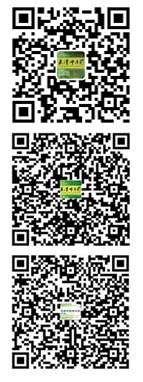| 摘要: |
| [目的] 分析中药治疗缓慢性心律失常随机对照试验结局指标的现状,为构建中药治疗缓慢性心律失常核心指标集奠定基础。[方法] 检索中国知网(CNKI)、万方数据知识服务平台(Wanfang Data)、维普中文科技期刊数据库(VIP)、中国生物医学文献服务系统(SinoMed)、PubMed、Web of Science、Cochrane Library、EMbase 8大数据库自建库起至2023年12月关于中药治疗缓慢性心律失常的随机对照试验。对纳入研究进行偏倚风险评估,并对结局指标进行分析总结。[结果] 共纳入322篇文献,总样本量30 854例,报告结局指标93项。使用频次排名前10位的结局指标分别为临床疗效(78.6%)、24 h平均心率(60.0%)、心率(57.5%)、不良反应(45.7%)、24 h最慢心率(31.1%)、实验室安全性指标(24.8%)、中医证候积分(21.7%)、24 h总心搏数(16.1%)、心电图疗效(15.8%)及24 h最快心率(13.7%)。所有文献共包含23个测量时间点,其中63.0%的研究疗程为4周。[结论] 中药治疗缓慢性心律失常随机对照试验的结局指标存在诸多问题,如各个研究选择的结局指标具有较大的异质性、指标含义不清、未区分主客观指标、远期及经济学指标关注不足等,亟需进一步构建中药治疗缓慢性心律失常核心指标集,促进中医药研究高质量发展。 |
| 关键词: 缓慢性心律失常 中药 随机对照试验 结局指标 核心指标集 |
| DOI:10.11656/j.issn.1672-1519.2024.12.13 |
| 分类号:R541.7 |
| 基金项目:国家中医药管理局第三届国医大师及全国名中医传承工作室(翁维良全国名中医传承工作室);国家中医心血管病临床医学研究中心专项科研基金(CMC2022003);中央级公益性科研院所基本科研业务费专项(ZZ15-XY-PT-08);中国中医科学院科技创新工程(CI2022EO36XB)。 |
|
| Current analysis of outcomes in randomized controlled trials of traditional Chinese medicine for bradyarrhythmia |
|
ZHANG Xuexue, ZHANG Wantong, WANG Xujie, LI Mengxuan, WENG Weiliang, LI Qiuyan
|
|
Xiyuan Hospital of China Academy of Chinese Medical Sciences, Beijing 100091, China
|
| Abstract: |
| [Objective] This study aims to assess the current status of outcome indicators in randomized controlled trials(RCTs) investigating the effectiveness of traditional Chinese medicine(TCM) in treating bradyarrhythmia,laying the foundation for the construction of a core set of indicators for TCM treatment of bradyarrhythmia. [Methods] A comprehensive search was conducted across eight databases,including China National Knowledge Infrastructure(CNKI),Wanfang Data,VIP Database,SinoMed,PubMed,Web of Science, Cochrane Library,and Embase,covering studies from inception to December 2023. The included studies were assessed for risk of bias,and the outcome indicators were analyzed and summarized. [Results] In total,322 articles were included,involving 30 854 participants and reporting 93 outcome indicators. The top ten most frequently utilized indicators were clinical efficacy(78.6%),24-hour average heart rate(60.0%),heart rate(57.5%),adverse reactions(45.7%),24-hour slowest heart rate(31.1%),laboratory safety indicators(24.8%),TCM syndrome score(21.7%),24-hour total heartbeats(16.1%),electrocardiogram efficacy(15.8%),and 24-hour fastest heart rate(13.7%). The included articles encompassed 23 measurement time points,with 63.0% of the studies having a treatment duration of 4 weeks. [Conclusion] The outcome indicators in RCTs evaluating TCM treatment for bradyarrhythmia exhibit several challenges,including substantial heterogeneity in selected indicators,unclear indicator definitions,insufficient differentiation between subjective and objective measures,and a lack of attention to long-term and economic indicators. Urgent efforts are needed to construct a standardized core set of outcome indicators for evaluating the efficacy of TCM interventions in bradyarrhythmia treatment,fostering the high-quality development of TCM research. |
| Key words: bradyarrhythmia traditional Chinese medicine randomized controlled trial outcome indicator core set of outcome measure |
